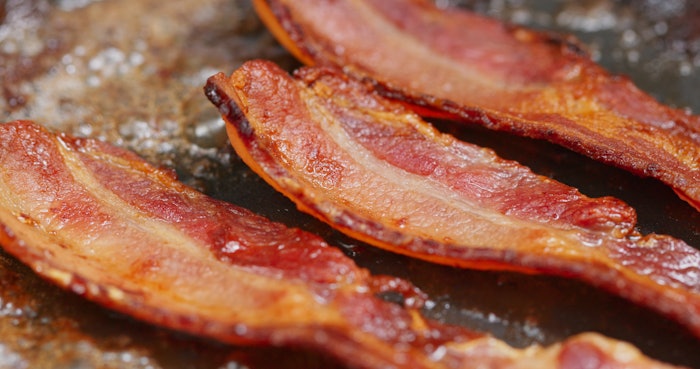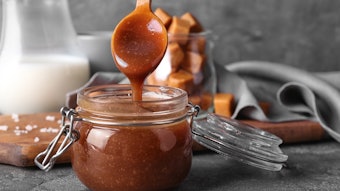
2,6-Dimethyl pyridine, sometimes called 2,6-lutidine (FEMA # 3540, CAS # 108-48-5) is an obvious candidate to replace pyridine in flavors. A quick look at the excellent VCF database shows just how widely pyridine is found in foods and what a challenge it can be to replace.
Pyridine has a very harsh, burnt profile, almost edging into ammoniacal. Higher molecular weight members of the pyridine family branch out into very different directions, many of them vegetal. The practical choice boils down to four low molecular weight alternatives, 2,4-dimethyl pyridine (FEMA # 4389), 2,6-dimethyl pyridine (FEMA # 3540), 5-ethyl 2-methyl pyridine (FEMA # 3546) and 3-ethyl pyridine (FEMA # 3394).
3-Ethyl pyridine is an excellent option and is the most widely used. The only drawback is a weak vegetal note. 2,6-Dimethyl is by far the nearest challenger in respect of use levels. Use levels are only a quarter of those of 3-ethyl pyridine but 2,6-dimethyl pyridine is several times stronger, pretty much balancing the equation. 2,6-Dimethyl pyridine has a modest cocoa character, which can be an advantage in some flavor categories.
Note that the dose rates given throughout this article are the levels suggested for use in flavors intended to be dosed at 0.05% in ready-to-drink beverages or in a simple bouillon.
Savory Flavors
Bacon: Bacon flavors need an obviously noticeable burnt note. 2,6-dimethyl pyridine does the trick at ten ppm. Higher levels can be pungent but still interesting.
Beef, Roast: The same comments apply to roast beef flavors. Widely different levels give widely different results. Five ppm is a good, modest, starting level.
Cheese, Cheddar: Cheddar cheese notes align with the profile of 2,6-dimethyl pyridine very well. Two ppm is effective.
Chicken: 2,6-Dimethyl pyridine can find a home in all styles of chicken flavors, ranging from two ppm in boiled chicken to five ppm in roast chicken.
Garlic, Fried: Five ppm of this chemical gives a freshly fried character to cooked garlic flavors.
Ham and Pork: Both ham and pork flavors are lifted and enhanced by one ppm of 2,6-dimethyl pyridine. Smoked ham flavors can use much higher levels, up to ten ppm.
Mushroom, Cooked: Cooked mushroom can have an obvious pyridine note. 2,6-Dimethyl pyridine is a good replacement alternative at around five ppm.
Onion, Toasted: Similarly, all styles of cooked onion flavors are enhanced by five ppm of this ingredient.
Pepper, Bell Roasted: Cooked bell peppers have a distinctive character, and 2,6-dimethyl pyridine plays a useful part at around five ppm.
Rice, Cooked: 2,6-Dimethyl pyridine is not the first ingredient that comes to mind to drive cooked rice flavors, but it enhances the cooked effect at two ppm.
Seafood: Cooked white fish flavors only need around two ppm of 2,6-dimethyl pyridine. Clam and shrimp flavors need a little more, around five ppm. Seaweed flavors can easily take ten ppm and more.
Smoke: Smoke flavors cover a range of different profiles. Mild, soft flavors work well with around 20 ppm of 2,6-dimethyl pyridine.
Nut Flavors
Almond: The ideal level of 2,6-dimethyl pyridine in toasted almond flavors is around five ppm.
Hazelnut: Hazelnut flavors often have a more assertive roasted note and the ideal level of 2,6-dimethyl pyridine should be nearer ten ppm.
Peanut: The same comments can be applied to peanut flavors and ten ppm is also ideal in this category.
Pistachio: Some pistachio flavors lean in the direction of toasted almond profiles. Five ppm of 2,6-dimethyl pyridine works well in this group.
Walnut: Much lower levels of 2,6-dimethyl pyridine, as low as one ppm, still have a distinct effect in walnut flavors. Five ppm of 2,6-dimethyl pyridine works well in pistachio applications.bit24 at Adobe Stock
Five ppm of 2,6-dimethyl pyridine works well in pistachio applications.bit24 at Adobe Stock
Brown Flavors
Chocolate and Cocoa: Levels of 2,6-dimethyl pyridine in chocolate flavors are typically around five ppm. Higher levels, up to ten ppm, are clearly better in cocoa flavors.
Coffee: Pyridine can have a considerable impact on the profile of freshly roasted coffee and the choice of a replacement is particularly important. 2,6-Dimethyl pyridine is quite harsh at 20 ppm, but this harshness is not out of place.
Malt: In contrast, only a hint, around two ppm, gives a subtle boost to malt and malted milk flavors.
Molasses: The use of 2,6-dimethyl pyridine in dark brown sugar flavors is decidedly optional, but it does boost molasses flavors significantly at one ppm.
Vanilla: This can be a dangerous ingredient in vanilla flavors because it can enhance smoked notes. Cautious additions, around five ppm, in vanilla bean flavors can work well.
Other Flavors
Beer, Dark: This raw material is not helpful for light beer flavors, but it does enhance dark beer profiles at around one ppm.
 Fig flavors are structured differently to many other categories of fruit flavor and a burnt note is not out of place.alicja neumiler at Adobe Stock
Fig flavors are structured differently to many other categories of fruit flavor and a burnt note is not out of place.alicja neumiler at Adobe Stock
Grape, Concord: 2,6-Dimethyl pyridine can only ever be a very minor ingredient in most fruit flavors, but the addition of a tenth of a ppm to Concord grape flavors can be helpful.
Milk, Condensed: Condensed milk and dulce de leche flavors span a wide range of profiles. They can range from the smooth and subtle up to the decidedly rustic. 2,6-Dimethyl pyridine is best suited to the rustic profiles and works well at two ppm.
Raisin: Raisin flavors, like fig flavors, are something of an exception within the fruit category in that subtlety is not essential. Moderate levels of 2,6-dimethyl pyridine work well, typically one ppm.
Rum, Dark: 2,6-Dimethyl pyridine can be used in all styles of rum flavors, but it is most effective in dark rum flavors. One ppm is a reasonable starting point.
Tea: The addition of 2,6-dimethyl pyridine to black tea flavors is quite logical and thirty ppm is a good starting level. Less logically obvious is the use of this ingredient in green tea flavors. Nevertheless, it works well at ten ppm.
Watermelon: Surprisingly, a hint of 2,6-dimethyl pyridine, around a tenth of a ppm, generates an interesting effect in watermelon flavors.
Whisky: Whisky flavors cover a range of profiles from smooth and malty to distinctly smoked. 2,6-Dimethyl pyridine works best in the latter category. A modest addition, around one ppm, can work wonders.










